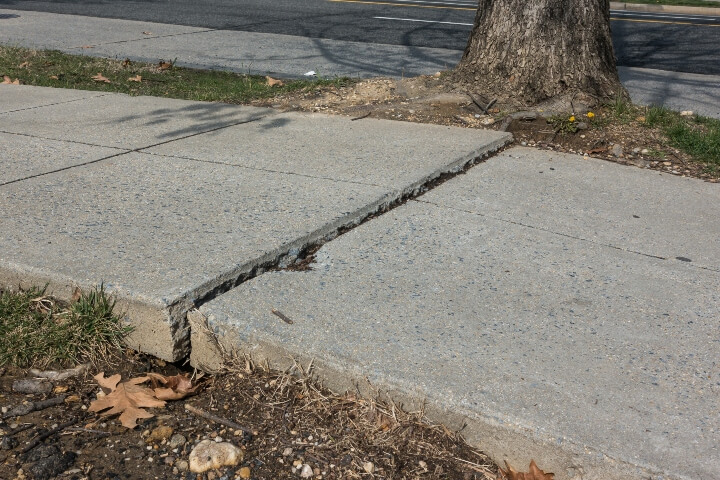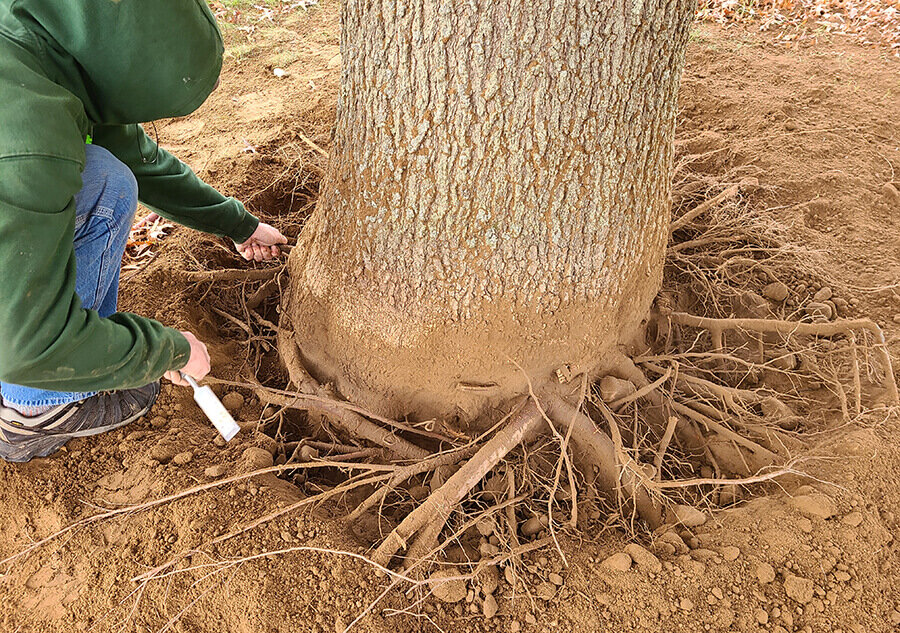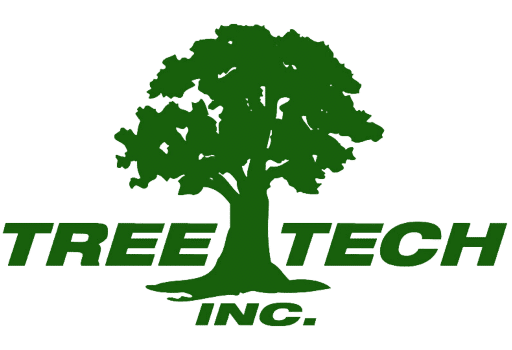
Your trees are only really as healthy as their roots. Unfortunately, there are a lot of different problems that can negatively affect your trees’ root collars – meaning the area where their roots join the trunk. Such problems include girdling roots, soil compaction, and improper planting or transfer techniques.
Today, we want to explore some common root collar disorders, how to recognize them, and what our arborists can do to resolve them. You can’t always avoid such issues, but you can recognize them early on and put a proactive plant health care plan in place.
What Does a Healthy Root Collar Look Like?
When kids draw trees, they’ll typically draw a flare at the bottom of the trunk. That’s actually how a properly planted tree ought to look. If that flare is missing, and it looks like the tree is going straight into the ground like a telephone pole, then there is probably an issue to deal with. It’s possible that the tree has a girdling root, which is a root that wraps around the trunk and squeezes on it like a too-tight belt.
How Do Girdling Roots Typically Form?
Most of the girdling roots form from trees that are root bound in containers at nurseries. Since the roots cannot expand outward they start to circle the root ball by following the sides of the container. Also, poor planting practices can cause them or contribute especially to planting too deep. In some cases, the grade of the property may have been raised or due to poor mulching practices, bringing the soil higher than is ideal up a tree’s trunk.
Signs of Root Collar Disorders
There are a number of signs to look out for which can indicate root collar problems with the trees on your property. Don’t dismiss them as being too minor to deal with right away. The longer you wait to address root collar problems with any trees on your property, the worse off those trees are going to be in the long run.
Some common symptoms of root collar disorders include:
- Yellowing leaves
- Early leaf coloration and dropping
- Dieback in the tree’s upper crown
Recognizing Root Collar Disorders

As mentioned above, trees ought to have a visible flare at the root collar. If not, then the tree’s root collar is likely buried, and that means the tree might struggle to move oxygen and carbon dioxide in and out of its inner bark. Basically, the tree is suffocating because its root collar is buried. Plus, the stress of root collar burial predisposes trees to a number of additional problems, such as those caused by secondary invaders like wood-boring insects. Also, the flow of sap is physically cut off over time by a girdling root, limiting the trees ability to move nutrients.
Need a Tree and Plant Healthcare Estimate?
Click below to leave your information and we will call you right back!
Ready to schedule your tree & plant care service?
Leave your information below and we will give you a call back.
*During normal business hours. After hours calls will be returned the next business day.
How Tree Tech, Inc. Can Help
First of all, our plant health care professionals have the expertise necessary to diagnose the specific root and soil problems your trees are up against. A proper diagnosis is the first step toward successfully solving the existing problem, and preventing further issues in the future. Once we’ve diagnosed the ailment, we put our expertise to use – along with some specialized equipment we have at our disposal. One of these tools is the AirSpade, which is particularly advantageous when it comes to dealing with compacted soil. This is a tool that uses high-pressure air to safely remove soil around tree roots without causing any mechanical damage, unlike traditional digging equipment.

Before you can deal with root collar problems of any kind, you need to recognize them. Keep the signs and symptoms discussed above in mind, and don’t hesitate to contact Tree Tech, Inc. today!
Back to Tree and Plant HealthcareCommon Tree Root Problems in Eastern Massachusetts
Also Serving Rhode Island
Boston | Worcester | Cambridge | Brockton | Quincy | New Bedford | Fall River | Newton | Foxboro | Framingham | Plymouth | Attleboro | Taunton | Hingham | Needham | North Attleboro | Norton | Easton | Franklin | Walpole | Dover | Westwood
Providence | Warwick | Cranston | Pawtucket | Newport | Woonsocket | Cumberland | Coventry | Newport | Johnston | North Kingstown | Bristol | Portsmouth
Home » Tree and Plant Healthcare » Common Tree Root Problems



